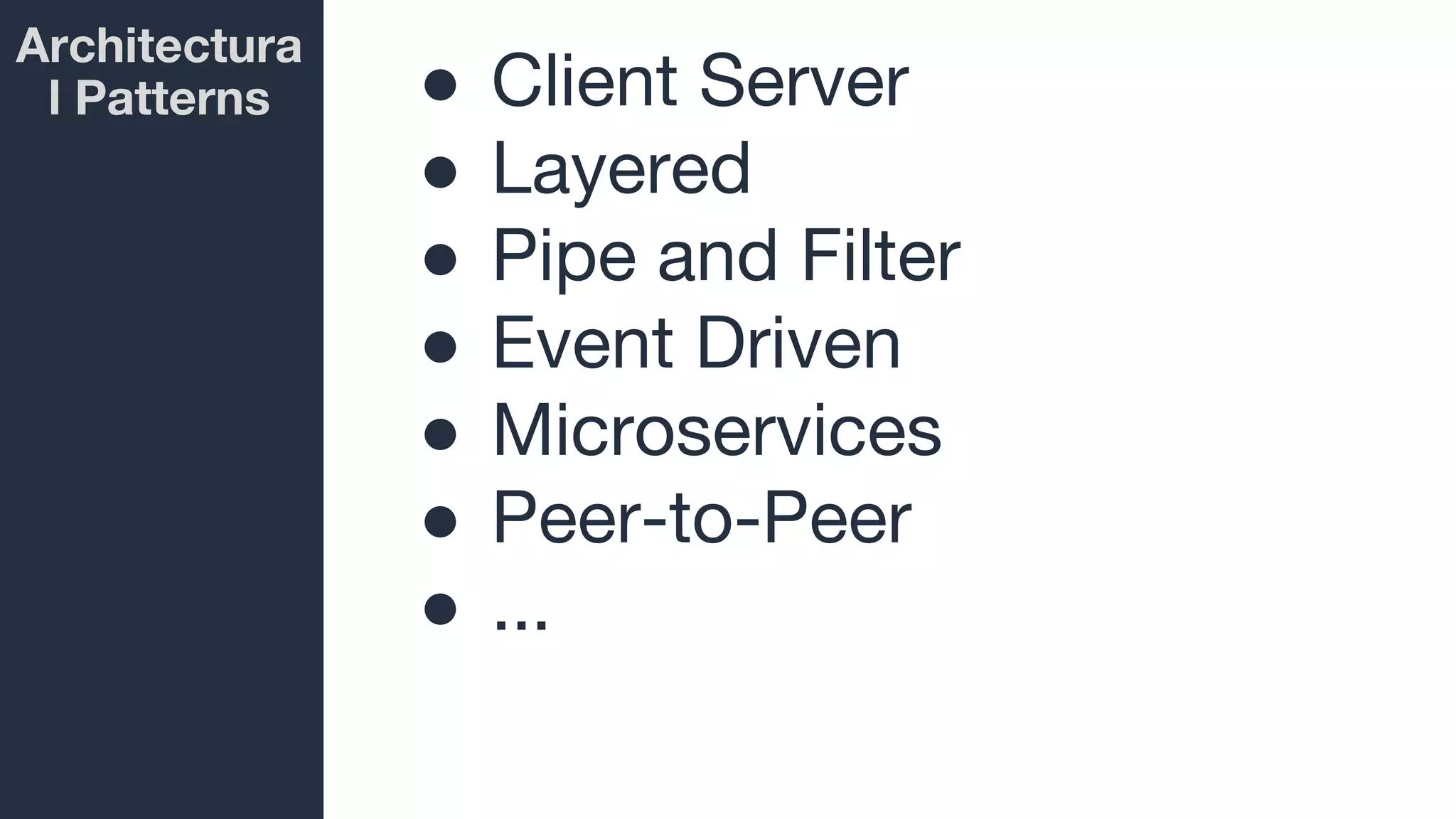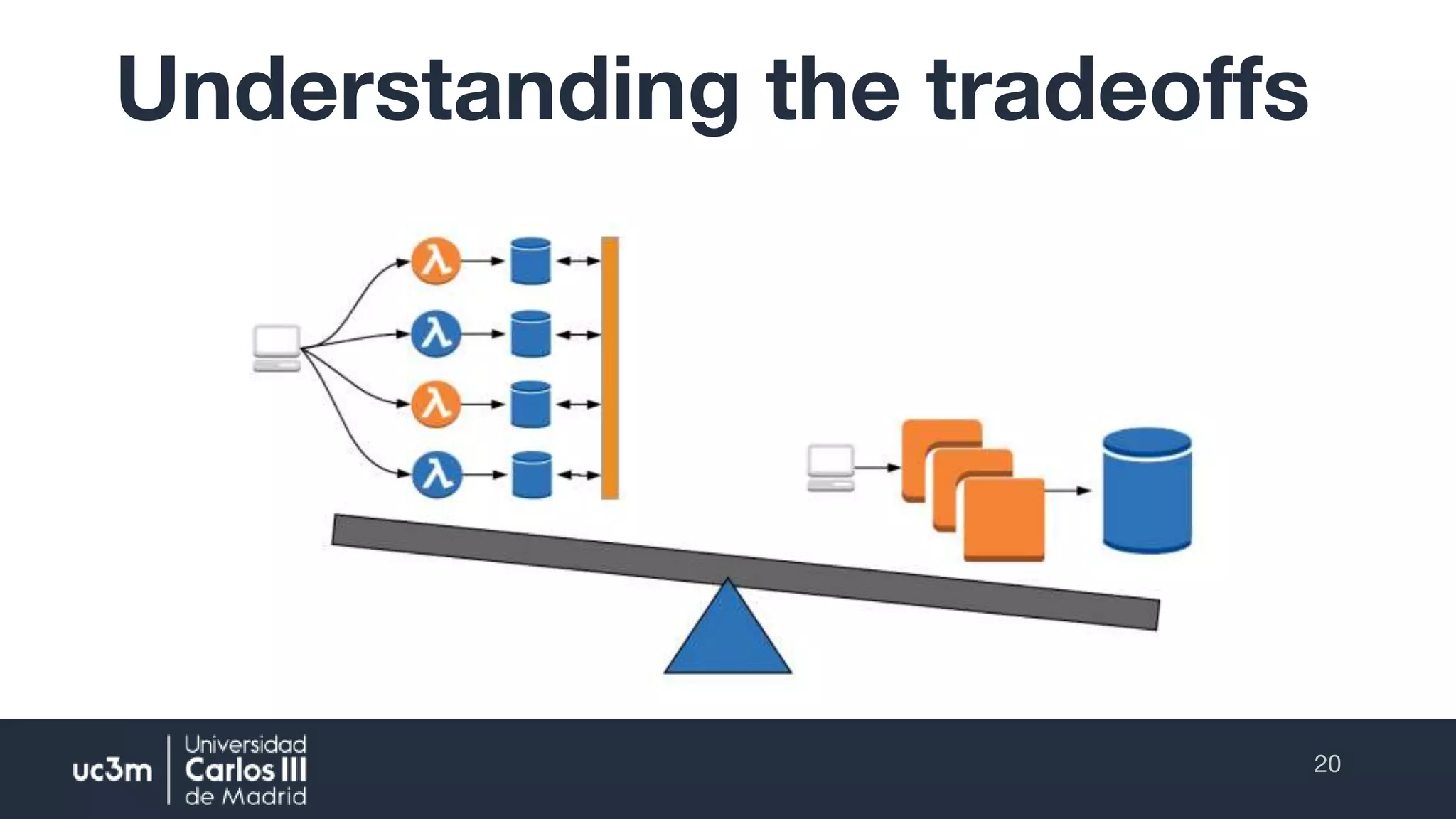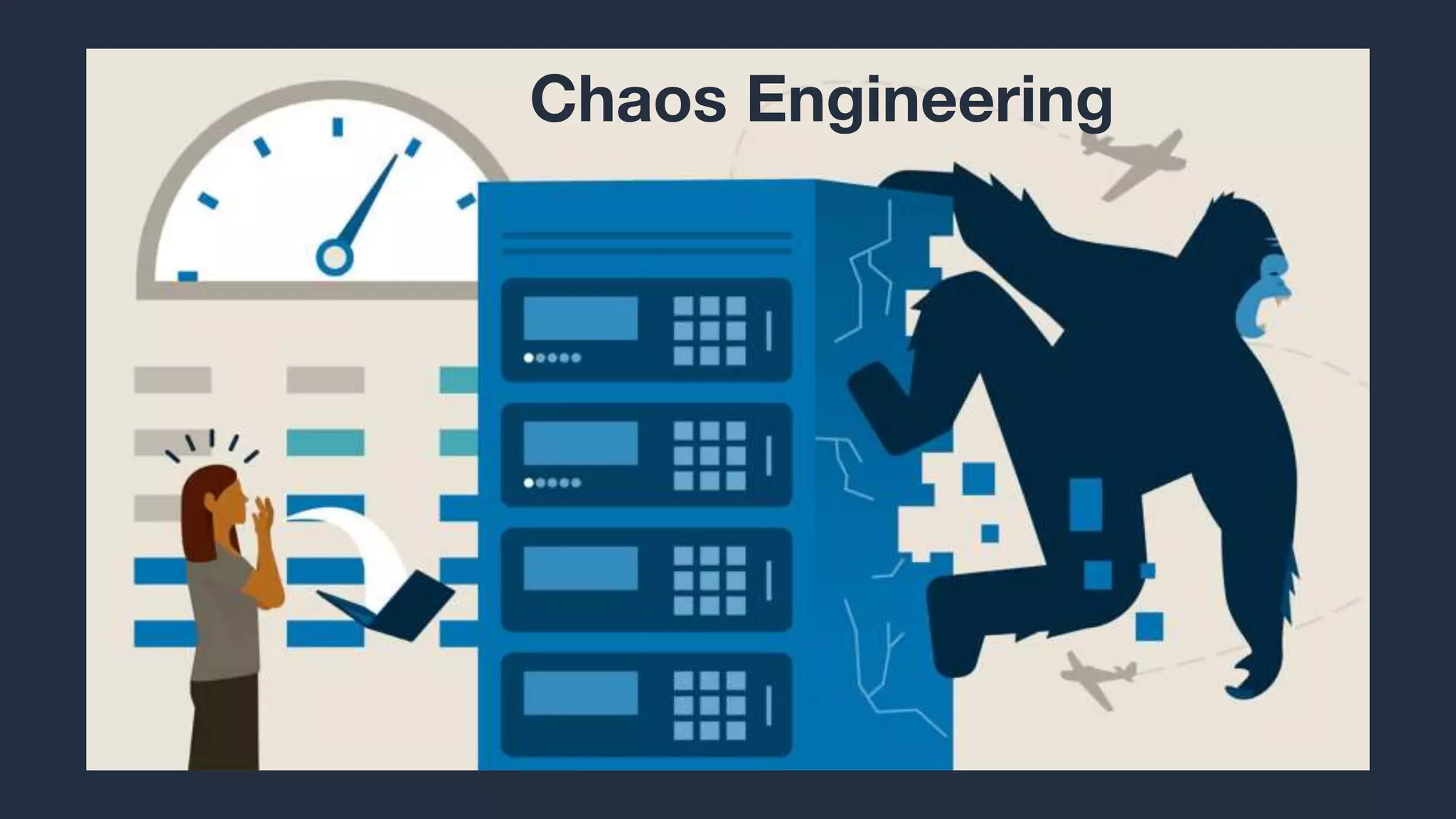This document summarizes a presentation titled "Software Architecting at Scale" given by Sergio Fernández, a Senior Software Development Engineer at Amazon. The presentation discusses trends in software architectures like monolithic, SOA, and microservices approaches. It covers challenges of scaling software and architectural patterns to handle increasing complexity. It also provides examples of Amazon's architecture practices like AWS services, the Architecture Center, and Chaos Engineering. The presentation promotes architecting with structure and Amazon's leadership principles.



























